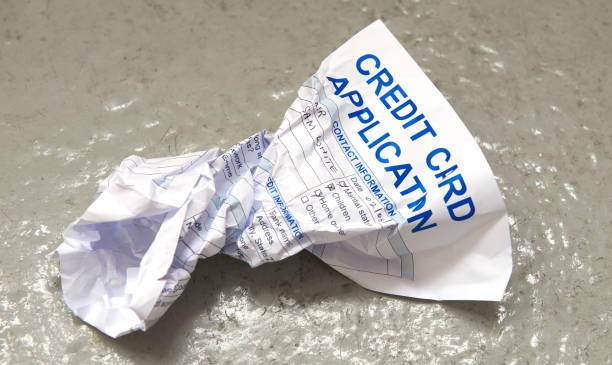 The crisis of overextended personal debt is deeply intertwined with a pervasive and often overlooked contributing factor: widespread financial illiteracy. This absence of fundamental economic knowledge is not a simple lack of information; it is a critical vulnerability that leaves individuals susceptible to poor decision-making, predatory lending, and a cycle of debt that feels inescapable. The relationship is one of cause and entrenched effect, where ignorance fuels the debt, and the resulting stress obstructs the clear thinking needed to escape it.Financially illiterate consumers often enter into obligations without a full understanding of the long-term consequences. The allure of a low monthly payment obscures the terrifying reality of compound interest over a lengthy loan term. A seemingly manageable auto loan stretching for seven years or a credit card’s minimum payment becomes a trap, as the borrower fails to calculate the ultimate cost. They may not comprehend the damage a high debt-to-limit ratio inflicts on their credit score, further increasing their cost of borrowing and limiting future options. This lack of foresight turns reasonable agreements into lifelong anchors.Furthermore, this knowledge gap creates a market for predatory products. Payday lenders, high-interest installment loans, and rent-to-own schemes specifically target those who cannot decipher their exploitative terms. Without the skills to create and adhere to a realistic budget, individuals are forced to react to financial emergencies with these disastrous options, layering high-interest debt upon existing struggles. The pressure to maintain a certain lifestyle, amplified by social media, encourages spending without a foundational understanding of income allocation, leading to financing a life far beyond one’s means.Ultimately, financial illiteracy disarms individuals in an economic environment designed to encourage borrowing. It transforms debt from a potential tool into a perpetual burden. The path forward requires a cultural shift towards prioritizing economic education, equipping people not just with information, but with the critical skills to navigate a complex financial landscape, differentiate between opportunity and exploitation, and break the cycle where confusion leads to debt and debt perpetuates despair.
The crisis of overextended personal debt is deeply intertwined with a pervasive and often overlooked contributing factor: widespread financial illiteracy. This absence of fundamental economic knowledge is not a simple lack of information; it is a critical vulnerability that leaves individuals susceptible to poor decision-making, predatory lending, and a cycle of debt that feels inescapable. The relationship is one of cause and entrenched effect, where ignorance fuels the debt, and the resulting stress obstructs the clear thinking needed to escape it.Financially illiterate consumers often enter into obligations without a full understanding of the long-term consequences. The allure of a low monthly payment obscures the terrifying reality of compound interest over a lengthy loan term. A seemingly manageable auto loan stretching for seven years or a credit card’s minimum payment becomes a trap, as the borrower fails to calculate the ultimate cost. They may not comprehend the damage a high debt-to-limit ratio inflicts on their credit score, further increasing their cost of borrowing and limiting future options. This lack of foresight turns reasonable agreements into lifelong anchors.Furthermore, this knowledge gap creates a market for predatory products. Payday lenders, high-interest installment loans, and rent-to-own schemes specifically target those who cannot decipher their exploitative terms. Without the skills to create and adhere to a realistic budget, individuals are forced to react to financial emergencies with these disastrous options, layering high-interest debt upon existing struggles. The pressure to maintain a certain lifestyle, amplified by social media, encourages spending without a foundational understanding of income allocation, leading to financing a life far beyond one’s means.Ultimately, financial illiteracy disarms individuals in an economic environment designed to encourage borrowing. It transforms debt from a potential tool into a perpetual burden. The path forward requires a cultural shift towards prioritizing economic education, equipping people not just with information, but with the critical skills to navigate a complex financial landscape, differentiate between opportunity and exploitation, and break the cycle where confusion leads to debt and debt perpetuates despair.
Key fees include late payment fees, over-the-limit fees, and foreign transaction fees. Understanding these penalties is essential to avoid unexpected costs that add to your debt burden.
It leads to a dangerous cycle of debt accumulation. Each new emergency adds high-interest payments to your monthly budget, reducing your disposable income and making it even harder to save, thus increasing your vulnerability to the next shock.
Commit to one small action. This could be ordering your credit report, writing down all your debts on a single piece of paper, or calling a non-profit credit counseling agency. One step forward can build momentum and diminish feelings of helplessness.
Budgeting apps (like Mint, YNAB, or EveryDollar) can automate tracking and provide clarity, making it easier to stick to your plan. However, a simple spreadsheet or pen and paper can be equally effective if used consistently.
Focus on high-interest debts (avalanche method) or smallest balances first (snowball method) to save money or build momentum.